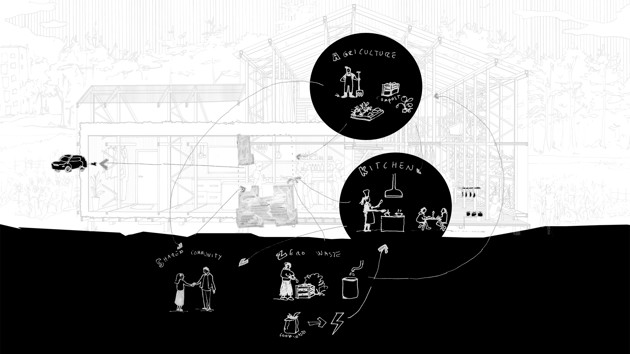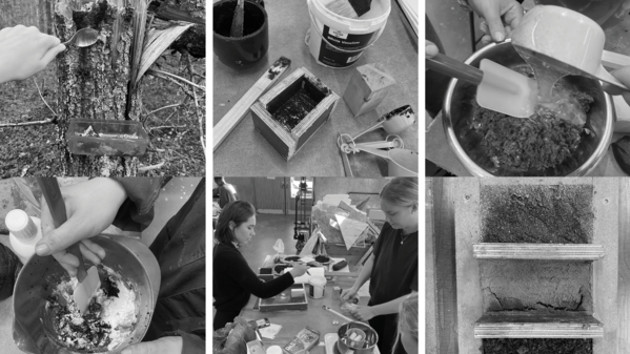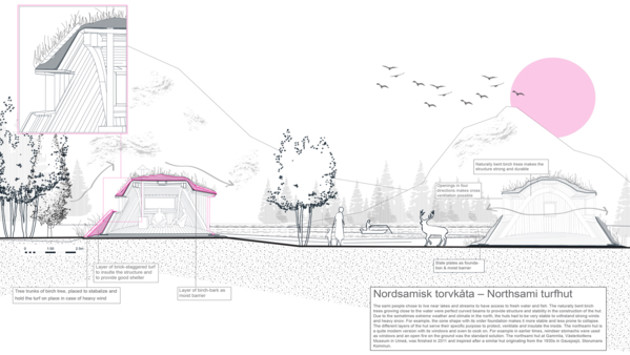Signe Höijer, Constanze Hirt / Growing Alidhem, Circular Diagram-Reusing Spaces, BA-Project, 2023, Studio 2
Image:Signe Höijer, Constanze HirtClosing loops. Circular Architecture
Environmental crises, rising commodity prices, disrupted supply chains for building materials, pandemics, global conflicts, and weather uncertainties require a rethink of architecture. Construction costs are expected to rise in the coming years, while building materials on the market are limited by available resources and climate change. How can we develop new building typologies while protecting the ecosystems around us? Closing loops: We want to take a more critical look at circular processes to find new methods of reusing regional materials and waste materials in the Västerbotten region in northern Sweden. By activating existing structures for autonomous concepts, we see ourselves as reinventors, decoders and discoverers of low-tech design for holistic living concepts. We want to bring back the knowledge of the building of material cycles to find new ways of acting, thinking and simply living for all living beings in coexistence.
Context of Investigation
The regional heritage of Northern Sweden, perfectly adapted to the climatic, topographical, resource and social aspects when it was not yet globalized, has a quality from which we can learn. Our starting point is Holmön (1300) and Gammlia Open Air Museum in Umeå (1920) to take a closer look at earlier building techniques and see what we can learn from this vernacular architecture and building methods before 1900. This year, the island of Holmön is our experimental field laboratory to explore earlier building techniques in local architecture. Our aim is to rebuild and redesign existing buildings in the island context using materials no longer found within a 20km radius to create a self-sufficient future concept. At this exposed location on an island, we research and strengthen energy production for independent operation and research in participatory processes of all those involved, such as the community, the local population, and self-organizations. In the fall semester, UMA 2 will design within Berguddens fyrplats and UMA 3 can choose freely on the Holmöns site within an already existing structure.
Studio Agenda and Methodology
In Studio 2, circular processes are researched by tracing vernacular architecture to invent visionary, low-tech design in the fall. In a waste material workshop, we explore new materials and their application in an existing wooden playhouse. Holistic planning and production methods is tested in the crafting workshop at scale 1:1. Circular design solutions aimed at changing the role of residents and buildings from being consumers to becoming producers.
The spring semester focuses on a more urban and landscape-based approach to circular building design through prototyping. Innovative prototypes are tested for their contextual behaviours and sustainable performance by being implemented in a specific place to develop new innovations for reused materials and low-tech design.
Teaching team: Constanze Hirt (studio responsible), Maja Hallén, Nina Larsson + guests
Latest update: 2023-08-30


